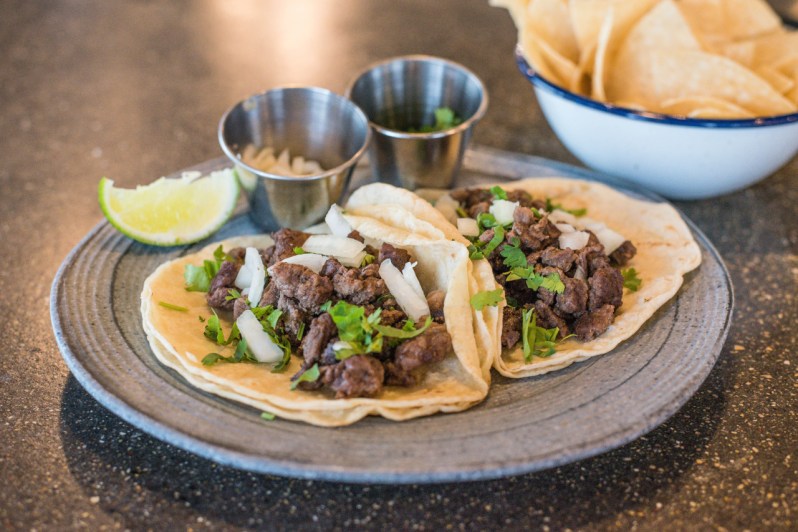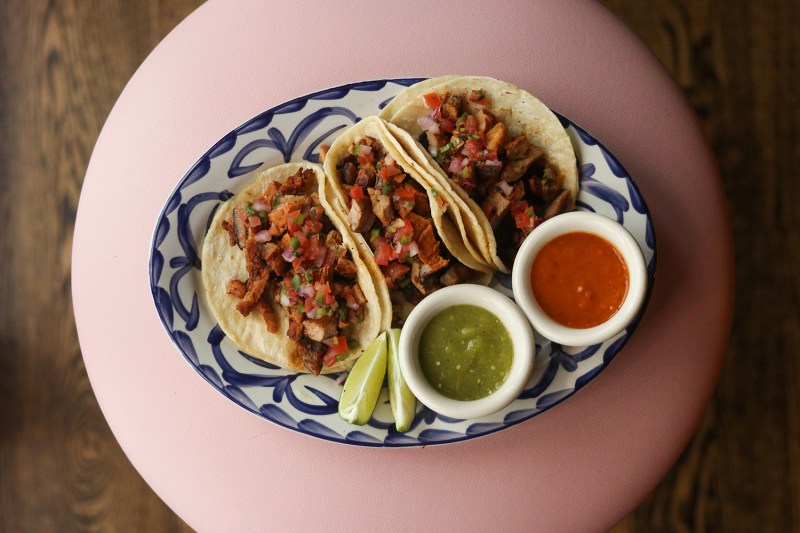
Carne asada, a smoky and savory Mexican-style steak, is one of the most popular items in Mexican cuisine. Spanish for “grilled meat,” carne asada is incredibly prevalent in America, and it can be quite tricky trying to find a Mexican menu that doesn’t feature this iconic beef dish. But carne asada isn’t only a restaurant treat — it can be recreated fantastically at home. All you need is quality meat, the right techniques, and a hot grill.

Origins of carne asada
The historic origins of carne asada can be traced to the Spanish colonization of Mexico. Cattle are not native to Mexico. Cows were brought to Mexico in 1521 by the Spanish to serve as labor and dairy animals. Initially, beef was not widely eaten, as the meat from these early working animals were tough and expensive because of their value as farm animals.
As cattle production increased in the 19th century, two distinct cattle markets emerged in Mexico — grain-fed cattle in northern Mexico for the American market and grass-fed cattle in central and southern Mexico for the domestic market. Because of northern Mexico’s arid climate and pasture lands, cattle ranching became a way of life in the north. From this culture of cowboys and ranching grew carne asada. This beloved northern Mexican culinary tradition is especially prominent in Sonora, a Mexican state on the border of Arizona. Here, social gatherings often center on plentiful amounts of grilled beef and ice-cold beer.

Everything you need to know about making carne asada
There are several parts to making carne asada at home. Keep reading and learn how to get through each step of how to make the best and tastiest Mexican carne asada.
The seasoning
There are many ways to make carne asada, ranging from simple salt to complex marinades. Many Mexican carne asada recipes will call for ingredients like cilantro, citrus (orange, lime), garlic, beer, or even soy sauce and cinnamon. Citrus juice and beer is used not only for flavor but also as a tenderizer. The natural acids in both ingredients help break down the meat, making it softer.
However, some versions of carne asada will be seasoned only with salt. The philosophy behind this simple seasoning is to highlight the natural flavor of the beef and charcoal. Also, carne asada is often served with a variety of flavorful salsas that add the desired spice element.
The meat
There are many great steak options for carne asada such as flank, top sirloin, or ribeye. For these cuts, simply grill to the desired doneness and enjoy. Since carne asada is often served in taco form, it’s important to slice or dice the finished steak into smaller pieces. Like all steak, be sure to rest the meat before slicing to avoid causing the precious juices to leak.
In Mexico, carne asada meat is usually thin so cuts like arrachera (skirt) or sirloin flap are ideal, packing a juicy, almost irony beef flavor. Another cut to consider is thinly sliced short rib as this cut has both rich flavor and fatty marbling. Fat cooked on the grill will become crispy, very different from the gummy fat that can result from pan cooking.
The grilling
Although one will find carne asada cooked on a flat-top at taco trucks and restaurants, a true carne asada is grilled. For the best results, use charcoal instead of propane with that smoky flavor that’s essential for good carne asada. Since most carne asada meat is sliced thin, cooking time will be relatively fast.

Accompaniments
Besides the meat, a good carne asada meal contains a variety of accompaniments. Common additions to carne asada include: raw onions, cilantro, red and avocado salsas. Whole grilled spring onions are also a popular addition and tastes delicious when eaten alongside the beef.
Unlike other parts of Mexico, carne asada in the north is often served with wheat flour tortillas instead of the more common corn. Besides tacos, carne asada can also be eaten alongside rice and beans with an array of garnishes like guacamole, grilled jalapenos, and raw radishes.

Casa Del Toro’s carne asada with Arroz Rojo
(By Chef Moises Rodriguez, formerly of Casa Del Toro in New York City)
Casa Del Toro was an authentic Mexican restaurant and cocktail bar located in Hell’s Kitchen, Manhattan. Casa Del Toro presented imaginative Mexican cuisine in a vibrant and sensuous setting, mixing style, invigorating dishes, and hospitality.
For Chef Rodriguez, his carne asada recipe was all about the marinade. He preferred a combination of garlic, cumin, and black pepper to bring out the savory richness of the beef. Chef Rodriguez liked to use skirt steak because of its intense flavor and preferred his carne asada cooked to a medium rare for the ideal tenderness. If a grill is unavailable, a heavy skillet on high heat is a suitable replacement.
Ingredients
For the carne asada
- 2 pounds skirt steak
For the marinade
- 1/2 tabkesoon salt
- 1/2 tablespoon black pepper
- 4 finely chopped garlic cloves
- 1/4 cup olive oil
- 2 tablespoons cumin
For the arroz rojo/rice
- 2 quarts rice
- 1 large onion
- 2 tablespoons ancho powder
- 1/2 cup tomato paste
- 5 teaspoons salt
- 2 quarts water
- 1 cup vegetable oil
- Avocado
- Cilantro
Method
For the carne asada
- Combine the marinade ingredients with the meat. Coat evenly and marinade for a day in a covered bowl or plastic bag.
- After 24 hours, take the meat out of the marinade. Disregard the excess marinade.
- On a hot grill, cook meat for 5-7 minutes. For the best flavor and tenderness, aim for rare or medium-rare.
- When meat is cooked, remove from the grill and rest on a plate or cutting board.
- Slices against the grain to serve.
For the arroz rojo
- In a large pot, cook onions, tomato paste, and ancho chili in oil for 2 minutes until aromatic.
- Add rice to the pot and stir.
- Add water and salt to the pot until the rice is covered.
- Cover with a lid and cook for 20 minutes on low heat.
- Fluff rice with a fork and serve with carne asada, avocado slices, and cilantro.

Tips on what drinks to pair with carne asada
When it comes to pairing drinks with carne asada, you have a variety of options. Classic pairings include beer, particularly refreshing lagers or pilsners. Their light body cuts through the richness of the meat and provides a welcome effervescence. Margaritas also pair wonderfully. The citrusy lime juice in the margarita complements the smoky and savory notes of the grilled meat, while the tequila adds a refreshing kick.
Other pairings that can be more adventurous include sangria, a Spanish wine punch The fruity flavors of a sangria can provide a contrast to the meat, while the wine base adds complexity. Mezcal, a smoky cousin of tequila, can add a unique depth of flavor to your carne asada pairing.
If you’re looking for non-alcoholic options, Jarritos, a Mexican soda made with natural flavors like tamarind and lime, can be a refreshing and flavorful choice. And iced tea or horchata, a sweet rice milk beverage, can also be delightful accompaniments.



